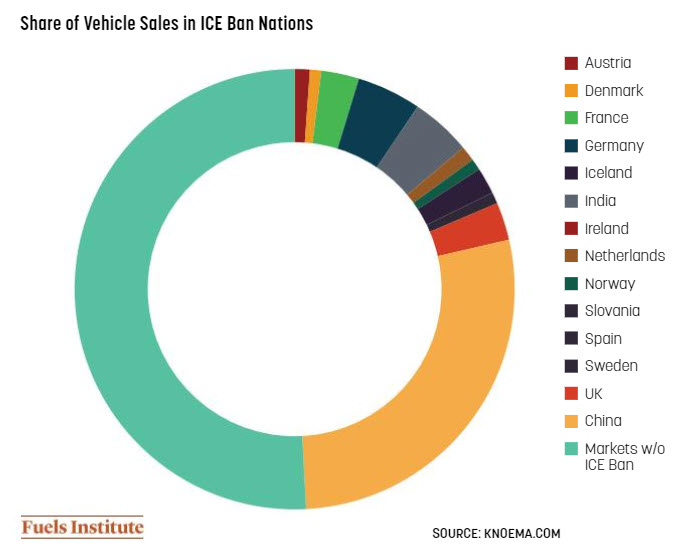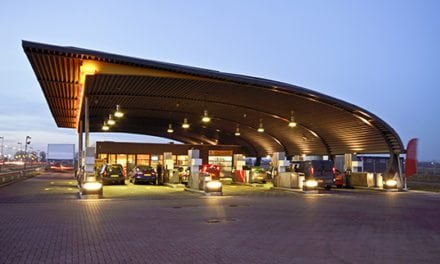By John Eichberger
In general, the developed economies of the world are uniting in their pursuit of a lower carbon/carbon neutral/net zero carbon emissions transportation system. It is a laudable goal and one that deserves careful attention, commitment and coordinated action to reduce carbon emissions throughout the global market. Yet, at the end of 2020 there seemed to be a significant lack of coordination, especially when we consider the flurry of activity with regards to banning the sales of internal combustion engines (ICE) in the relatively near future.
There is competition to be first to market, to take on the banner of leader in the pursuit of carbon reductions. As I was thinking about it, a familiar guitar riff began to play in the back of my head, released by a British band in 1985—Tears for Fears, “Everybody Wants to Rule the World.”
The Fuels Institute’s own assessments of market turnover to new technology indicate that if historic patterns of vehicle purchase and retirement persist, combined with traditional consumer behavior relative to transitioning to substitute products, it will take decades for a new technology to make a significant dent in the overall vehicle fleet. For those who believe this pace of change is not fast enough, pursuing government programs to accelerate the transition is consistent with their objectives.
ICE Bans – A Global Trend
The Fuels Institute’s most recent report, “Impact of Transportation-Related Environmental Initiatives,” looks at a wide range of movements (37 total) either implemented or being considered globally to address emissions from the transport sector. Among these is a look at proposed or actual policies to ban the sale of ICEs. It is worth taking a quick look at the report.
The following 15 nations have made some movement (announcement, legislation, executive action) toward phasing out ICEs by 2040 or sooner: Austria, China, Denmark, France, Germany, Iceland, India, Ireland, the Netherlands, Norway, Scotland, Slovenia, Spain, Sweden and the United Kingdom.
This list is not insignificant—according to the statistical site Knoema.com, these 15 countries represented about 46% of all vehicle sales (light duty and commercial) in the world in 2019. However, China itself represented 28% of global sales, with the European countries representing about 18%.
In 2020, U.K. Prime Minister Boris Johnson announced that the country’s proposed ICE ban would move to 2030 from 2040. In the U.S., California Governor Gavin Newsome has announced an executive order to ban the sale of ICEs in his state effective 2035. Then in Canada, the Province of Quebec announced a ban on ICE sales effective 2035, following British Columbia, which in May 2019 set a 2040 target date.
How Will ICE Bans Be Implemented?
Without diving into the specifics of any of these plans, they all raise a few questions for me:
- Will the vehicle manufacturing industry be able to shift production streams to satisfy the demands of these regions for new zero emissions vehicles? If not, what must change to satisfy these objectives?
- Will charging or hydrogen refueling infrastructure expand at a rate sufficient to satisfy consumer demand for transportation energy? What should regulators be considering to facilitate the necessary expansion?
- Are the electricity generation and transmission systems prepared for the additional demand? If not, what adjustments must be made between now and then to ensure reliable, affordable power is available to drivers? What might be the impact on lower-income and/or disadvantaged communities?
- Will consumers embrace the change? How might the governments address potential consumer concerns or encourage support for the new direction?
For regions within a country where migration between regions is easy, how will the policies address the desire of residents to register a vehicle purchased in another state or province?
The Fuels Institute will be convening a task group of stakeholders to explore the issues in more depth and develop a collaborative set of questions that should be at the forefront of consideration when these programs are officially developed. Hopefully, by providing such perspective, the interests of consumers and market participants can be effectively reflected in the implementation strategies. In addition, the Institute’s Electric Vehicle Council began working earlier this year and will soon be publishing several resources to help the market better understand the various factors that affect charger deployment.
I believe that the entire lifecycle of the transportation mode being advanced must be fully understood and addressed. I keep seeing a headline pop up in my Google news feed about the CEO of Polestar saying that electric vehicles are not necessarily clean, and there is more work to be done. Clearly, electric vehicles are a very important part of the long-term strategy, but reducing emissions from transportation requires a holistic approach, addressing as many inputs into the system as possible—no one initiative will achieve the objectives of a carbon neutral market. I believe the true global leader in the effort to reduce transportation carbon emissions will be the one who puts all the pieces together and shows a long-term sustainable solution.
Note: This is an abridged version of the article that appeared on the Fuels Institute blog, The Commute. Read the full version at www.fuelsinstitute.org/Resources/The-Commute/Everybody-Wants-to-Rule-the-World.
John Eichberger is executive director of The Fuels institute.
For more information, visit www.fuelsinstitute.org.











